Careers in Military Aviation, with its rich history and proud traditions, offers a multitude of careers that are both challenging and rewarding. Whether serving as a pilot, navigator or one of the many support roles essential to mission success, each career path within military aviation is integral to the defense and security of nations. This comprehensive overview sheds light on the various opportunities available in this exhilarating field.
Careers in Military Aviation

1. The Alluring World of the Pilot
Undoubtedly the most iconic role in military aviation, becoming a pilot is a dream for many.
- Fighter Pilots: Tasked with air-to-air combat, fighter pilots often fly aircraft like the F-16, F-22, or F-35. Their intensive training focuses on dogfighting, precision, and quick decision-making.
- Helicopter Pilots: Operating in machines such as the Black Hawk or Apache, these pilots provide troop transportation, conduct rescue missions, or engage in ground support.
- Cargo and Transport Pilots: Flying larger aircraft like the C-130 Hercules, they ensure troops, equipment, and supplies reach their destinations safely.
- Reconnaissance Pilots: In aircraft like the U-2, they undertake surveillance missions, gathering critical intelligence information.
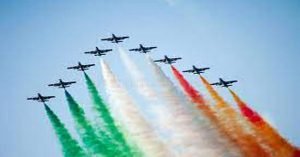
2. The Guiding Hand: Navigators and Weapon Systems Officers (WSO)
Also known as Flight Officers or Combat Systems Officers, they guide aircraft, operate advanced systems, and manage weapons. In some military branches, the roles of pilots and navigators are merging due to technological advancements.
Behind the celebrated images of fighter jet pilots are lesser-known but equally vital roles in aviation: the Navigators and Weapon Systems Officers (WSOs). These professionals are instrumental in ensuring mission success, from guiding aircraft through treacherous terrains to managing complex weapon systems. This article delves into the world of Navigators and WSOs, the unsung heroes of the skies.
1. Navigators: Charting the Path
- Role: Navigators are responsible for determining the position and planning the route of an aircraft, ensuring it reaches its destination safely and efficiently. This role is especially critical for long-haul flights and missions over unfamiliar or hostile territories.
- Duties:
- Plotting routes using charts and electronic aids.
- Calculating fuel requirements based on weather conditions, aircraft performance data, and mission requirements.
- Ensuring compliance with airspace restrictions.
- Assisting pilots with inflight navigation, especially in challenging conditions such as inclement weather or equipment malfunctions.
- Training: Navigators typically undergo rigorous training, including classroom instruction on geography, meteorology, and air traffic regulations, coupled with hands-on simulation exercises and actual flight experiences.
2. Weapon Systems Officers (WSO)
- Role: Also known as “backseaters” or “GIBs” (Guy/Gal in Back), WSOs are responsible for managing weapon systems in aircraft, primarily in fighter and bomber planes. They work in tandem with the pilot, who flies the aircraft, while the WSO focuses on targeting, weapon selection, and deployment.
- Duties:
- Operating radar and other sensors to detect, track, and engage targets.
- Managing electronic warfare systems to defend the aircraft from threats.
- Communicating with other aircraft and ground units for coordinated operations.
- Assisting the pilot with flight duties, especially during complex missions or emergencies.
- Training: WSOs undergo a curriculum similar to pilot training but are more specialized in the management of weapon systems. They receive instruction on weapon deployment, tactics, electronic warfare, and countermeasures. Their training is a mix of classroom sessions, simulators, and live-flight exercises.
3. The Evolution of the Roles
Over time, with the advent of advanced avionics and automation, the role of the Navigator has diminished in some modern aircraft. Advanced navigation systems, such as GPS and inertial navigation systems, allow pilots to undertake most navigation tasks themselves.
However, in complex military operations, especially those that involve strategic bombers or reconnaissance missions, Navigators continue to play a vital role.
Similarly, while some contemporary fighter aircraft designs emphasize a single-pilot operation with automated systems, many missions, especially those that are multi-role or involve a high threat environment, rely on WSOs for their specialized expertise.
4. The Synergy
The relationship between the pilot and the WSO or Navigator is one of deep trust and coordination. Both individuals must act in unison, especially in high-pressure scenarios. The WSO, with their focus on sensors and weapons, complements the pilot, who can then concentrate on flying the aircraft, evading threats, and making tactical decisions.
Navigators and Weapon Systems Officers remain integral to many military aviation operations. Their specialized training and skills ensure that aircraft not only reach their destinations safely but also accomplish their missions effectively. While they may not always be in the limelight, their contributions to aviation safety and mission success are undeniable. The guiding hand of the Navigator and the strategic prowess of the WSO together ensure the mastery of the skies.
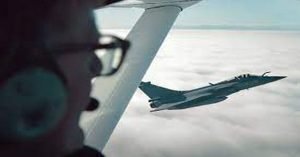
3. Air Traffic Controllers (ATC)
Just as in civilian airports, military bases require ATCs to manage the movement of aircraft. They handle takeoffs, landings, and in-flight traffic, ensuring safe and efficient operations. See details on Air Traffic Controllers (ATC).
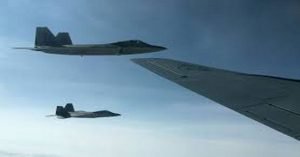
4. Unmanned Aerial Vehicle (UAV) Operators
As technology advances, UAVs or drones are becoming indispensable. Operators control these machines remotely, conducting surveillance, reconnaissance, or direct combat missions.
Unmanned Aerial Vehicles (UAVs), commonly known as drones, have revolutionized numerous sectors from military and aerospace to photography and agriculture. Operating these vehicles are specialized professionals known as UAV operators. This article delves into the world of UAV operators, their responsibilities, required skills, training, and challenges faced.
1. Definition of UAV Operator
A UAV operator is an individual trained to pilot or navigate drones. Depending on the application, an operator might also manage the systems on the drone, such as cameras, sensors, or communication devices.
2. Responsibilities of UAV Operators
- Pre-flight Checks: Ensuring the drone is in good working condition by inspecting its mechanics, software, and onboard systems.
- Safe Operation: Piloting the UAV without posing risks to people, property, or other aircraft. This involves understanding and adhering to flight regulations and restrictions.
- Data Collection: For UAVs equipped with cameras or sensors, operators might be responsible for gathering and sometimes analyzing data. This could be photographic, thermal, or even multispectral data.
- Maintenance: Post-flight checks, routine maintenance, and repairs to ensure the drone is always ready for operations.
- Coordination: For larger operations, UAV operators might work in teams or coordinate with other stakeholders, like air traffic control or on-ground teams.
3. Required Skills
- Technical Proficiency: A clear understanding of UAV mechanics, software, and systems.
- Attention to Detail: Given the precision required in many UAV operations, attention to detail is paramount.
- Problem-solving: The ability to quickly address any technical or environmental challenges that arise during flight.
- Communication: Especially when working in teams, clear communication is crucial to ensure safe and effective operations.
4. Training and Qualifications
- Formal Training: Many institutions now offer specialized courses in UAV operations, which cover both theoretical knowledge and practical flight training.
- Certifications: Many countries require UAV operators to be certified, especially for commercial operations. For instance, in the USA, the FAA has the Part 107 certification for commercial drone pilots.
- Continuous Learning: Given the rapid advancements in UAV technology, continuous learning and staying updated with the latest in the field is crucial.

5. Challenges Faced by UAV Operators
- Regulatory Restrictions: With the increase in UAV usage, many countries have implemented strict regulations, especially in urban areas or near airports.
- Public Perception: Drones, especially in residential areas, are sometimes perceived as an invasion of privacy or a nuisance, posing challenges for operators.
- Environmental Factors: Weather conditions, birds, and other environmental factors can pose challenges to UAV operations.
- Technological Limitations: Although rapidly advancing, drone technology still has limitations, especially in terms of battery life, communication range, and payload capacities.
6. Fields of Application
- Military and Defense: UAV operators in this sector are responsible for reconnaissance, surveillance, and sometimes even combat missions using armed drones.
- Agriculture: Drones are used for crop monitoring, pest control, and assessing health of plants. Operators here focus on data collection and analysis.
- Photography and Filmmaking: UAV operators in this field require a creative touch to capture stunning aerial shots.
- Surveying and Mapping: Drones can access hard-to-reach areas, making them ideal for topographical surveys, construction site monitoring, and more.
- Delivery and Logistics: Some companies are experimenting with drones for delivery, necessitating operators who can ensure safe and timely deliveries.
UAV operators are at the forefront of a technological revolution, driving innovations and applications in numerous sectors. As the demand for drone-based solutions grows, so will the need for skilled and trained UAV operators. From ensuring safety to harnessing the full potential of UAVs, operators play a pivotal role in the expanding world of unmanned aerial systems.
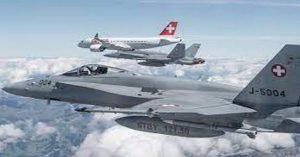
5. Aviation Maintenance and Aircraft Mechanics
The lifeblood of any aviation unit, these professionals ensure aircraft are in top condition. Specializations include:
Aerospace Propulsion Specialists:
Aerospace propulsion specialists are pivotal figures in the realm of aviation and space exploration. They focus on the design, testing, maintenance, and optimization of engines that power aircraft and spacecraft. Their expertise encompasses a wide range of propulsion systems, from traditional jet turbines and internal combustion engines to advanced rocket propulsion systems and electric or hybrid solutions.
The continuous pursuit of efficiency, safety, and sustainability in the aerospace industry hinges largely on the innovations driven by these specialists. As aerospace technology leaps towards newer horizons, including the exploration of Mars and the commercialization of space travel, the role of aerospace propulsion specialists becomes increasingly indispensable, ensuring humanity’s machines have the thrust and efficiency needed for their ambitious missions.
Avionics Technicians:
Avionics technicians are specialized professionals who install, maintain, troubleshoot, and repair an aircraft’s electronic instruments, such as radio communication devices, radar systems, navigational aids, and onboard computers. The term “avionics” is a blend of aviation and electronics. As modern aircraft increasingly rely on sophisticated electronic systems for navigation, communication, and flight control, avionics technicians play an indispensable role in ensuring these systems function correctly.
Their expertise ensures that aircraft operate safely and efficiently. To become proficient in their role, avionics technicians must undergo rigorous training and certification, often combining both theoretical knowledge and hands-on experience. With the rapid evolution of technology in aviation, they must also engage in continuous learning to stay abreast of the latest advancements.
Weapons Systems Technicians:
Weapons Systems Technicians who specialize in avionics are vital to the modern military’s airborne operations. These technicians maintain and repair the complex electronic systems onboard military aircraft, ensuring that communication, navigation, radar, and other critical systems function seamlessly during missions. With the advancement of technology, the role of avionics in aerial warfare has become increasingly significant.
As a result, avionics technicians play a pivotal role, bridging the gap between cutting-edge technology and the tactical requirements of the armed forces. Their expertise ensures that pilots and crew have reliable tools at their disposal, optimizing the aircraft’s performance in various operational settings and ensuring mission success. Their work often requires not just technical acumen but also an understanding of the broader strategic context in which the technology will be employed.
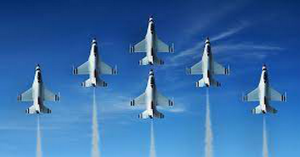
6. Flight Engineers
In the realm of military aviation, flight engineers hold a pivotal role that extends beyond the conventional duties seen in commercial aviation. Serving as a crucial link between the aircraft’s systems and the flight crew, a military flight engineer is responsible for ensuring the optimal functionality of an aircraft during complex and often high-risk operations. They perform pre-flight inspections, monitor engine and other critical systems during flight, and handle emergency procedures. Their comprehensive training encompasses a deep understanding of military aircraft systems, electronics, and mechanics, which they apply in diverse environments—from routine patrols to combat scenarios.
Furthermore, in the backdrop of evolving military technology, they are often at the forefront of adapting to and implementing new aviation technologies, ensuring that aircraft are both battle-ready and safe for those onboard.
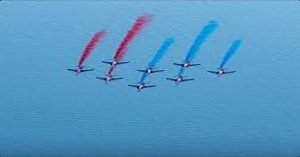
7. Aviation Support Roles
Beyond the spotlight of flying, many roles are vital for operations:
- Meteorologists: Provide crucial weather information, aiding in flight planning.
- Intelligence Analysts: Process data from reconnaissance and surveillance missions.
- Airfield Operations Officers: Manage runways, taxiways, and other facilities, ensuring the smooth running of the airfield.
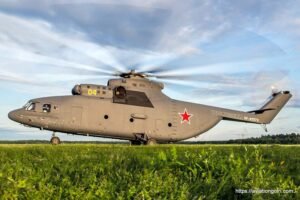
8. Pararescue and Combat Rescue Officers (CRO)
Pararescue jumpers, commonly known as “PJs,” along with Combat Rescue Officers (CROs), represent some of the U.S. Air Force’s most elite and specialized forces, dedicated to the core mission of personnel recovery. These units are trained to rescue and medically treat downed military personnel all over the world, often venturing behind enemy lines to save their comrades. Their rigorous training equips them with a myriad of skills ranging from parachuting and scuba diving to advanced medical and trauma care.
While PJs are primarily focused on field operations and medical rescue tasks, CROs take on a leadership role, planning and executing complex rescue operations and integrating them into broader combat strategies. Together, they form a formidable team, ensuring that the U.S. military ethos “Leave No One Behind” is not just a slogan, but a promise upheld in the harshest of conditions.
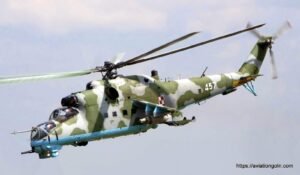
9. Special Operations
Military aviation’s Special Operations units represent an elite subset of forces specifically trained and equipped to conduct high-risk, high-reward missions in challenging and often hostile environments. These units often operate under the veil of secrecy, employing cutting-edge technology and aircraft adapted for specialized roles.
From night-time insertion and extraction of troops in enemy territory to targeted strikes and intelligence gathering, Special Operations aviation units play a pivotal role. Their pilots and crews undergo rigorous training, ensuring they can operate in the most demanding conditions, whether it’s navigating low-altitude terrains at night, handling extreme weather, or evading advanced enemy defense systems. The synergy between advanced aircraft, state-of-the-art technology, and highly trained personnel ensures that these units remain at the forefront of modern warfare, ready to respond swiftly and effectively to emerging threats and critical missions.
This includes roles in units like the U.S. Air Force’s Special Tactics or the Navy’s SEAL Delivery Vehicle Teams (SDVT), where personnel operate in conjunction with aviation units to achieve mission objectives.
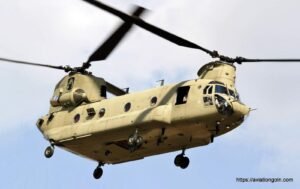
10. Aviation Medical Careers
Flight surgeons and aeromedical evacuation technicians are essential to address the unique medical needs of those in the aviation field.
Aviation medicine, sometimes called flight medicine or aerospace medicine, encompasses the preventive and curative aspects of the health and safety of flight crew, air passengers, and astronauts. Military aviation medicine is a specialized branch that deals with the physical and psychological demands faced by military pilots, aircrew, and support staff. This article provides an overview of medical careers in military aviation and sheds light on the roles, challenges, and rewards associated with them.
1. Role of Military Aviation Medicine
Military aviation medicine focuses on the unique challenges faced by military pilots and aircrew:
- High G-forces: Fast military jets expose the pilots to high G-forces which can impact blood circulation and cause G-induced loss of consciousness (G-LOC).
- Hypoxia: Flying at high altitudes without proper oxygen support can lead to reduced oxygen in the bloodstream.
- Spatial Disorientation: Military pilots can lose their sense of up and down, especially during night operations or in challenging weather conditions.
- Noise and Vibrations: Chronic exposure can lead to hearing loss and other related ailments.
- Psychological Stress: Combat situations can cause severe psychological stress, potentially impacting a pilot’s decision-making capabilities.
2. Key Medical Careers in Military Aviation
- Flight Surgeons: These are medical doctors trained specifically to support pilots and aircrew. They provide preventive care, monitor the health of crew members, and offer medical evaluations. They might also fly along on some missions to understand the challenges firsthand.
- Aerospace Psychologists: They assess the psychological health of pilots and crew, ensuring they are mentally fit for their roles. They may also assist in designing cockpit interfaces to be more intuitive or provide counseling after traumatic events.
- Aerospace Optometrists: Vision is critical for pilots. These professionals ensure that aircrew members have optimal vision and provide solutions for any visual problems, including recommending corrective lenses or therapies.
- Aerospace Physiologists: They study the physical challenges faced during flight and provide training and strategies to aircrew to counteract these challenges. This might include altitude training or G-force resistance techniques.
- Research Roles: Many military branches have ongoing research to improve the safety and performance of their personnel. Medical professionals often lead or participate in these research endeavors, developing new equipment or health protocols.
3. Education and Training
While the specifics vary by country, medical professionals in military aviation typically undergo:
- Basic Medical Training: All roles require a foundational education in medicine or their specific field (e.g., psychology, optometry).
- Specialized Training: This is focused on the unique challenges of aviation and might involve learning about high-altitude physiology, the effects of G-forces, or the psychological stresses of combat.
- Military Training: Since these roles exist within the military framework, some form of military training is typically required. This ensures the medical professionals understand the broader goals and protocols of the military and can work effectively within this structure.
4. Challenges and Rewards
Working in military aviation medicine presents unique challenges. The environment is often fast-paced, with high stakes. Medical professionals must provide solutions that account for extreme physical and psychological stresses. However, the rewards are significant:
- Making a Difference: The work directly impacts the safety and effectiveness of military air operations.
- Innovation: Professionals often work at the cutting edge of technology and medical research.
- Broader Opportunities: Experience in military aviation medicine can open doors to other opportunities, both within the military and in civilian aerospace sectors.
Aviation medical careers in the military are both challenging and rewarding. They offer a unique intersection of medicine, aviation, and military operations, ensuring that aircrew are safe, healthy, and effective in their vital roles. For those with a passion for medicine and aviation, it’s a field that promises constant learning, impactful work, and the chance to be part of a larger mission.

Advantages and Challenges of a Career in Military Aviation
Advantages:
- Skill Acquisition: Military aviation equips individuals with valuable skills that can be transferred to civilian roles, from piloting to aircraft maintenance.
- Education Opportunities: Many military branches offer scholarships or financial support for higher education.
- Adventure: Few careers offer the thrill of breaking the sound barrier in a fighter jet or parachuting into challenging terrains.
- Camaraderie: The bond between service members in aviation units is unparalleled, forged through shared experiences and challenges.
Challenges:
- Physical and Mental Demands: The physical standards for aviation roles are stringent. The mental toll, especially in combat roles, can be significant.
- Time Away: Deployments, training exercises, and missions can mean extended periods away from family and loved ones.
- Danger: Military aviation is not without its risks, from the perils of combat to the inherent dangers of flight.

Transitioning to Civilian Roles
Military aviation careers equip individuals with a wealth of experience and skills. Many find fulfilling second careers in the civilian sector:
- Commercial Piloting: Military pilots often transition to airlines or cargo carriers.
- Airport Operations: Experience in military airfield operations can be invaluable for civilian airports.
- Aerospace Industry: Technical and engineering roles in the private sector often seek those with hands-on military experience.
- Consultancy and Training: Many defense contractors or international organizations value the expertise of former military aviation personnel for training or advisory roles.

A career in military aviation is a path of dedication, discipline, and often, sacrifice. But for those drawn to the skies and the call of duty, the rewards — from the thrill of flight to the bonds formed with comrades — are unparalleled. As technology and tactics evolve, so too will the roles within this sector, ensuring military aviation remains an exciting and dynamic field for generations to come.
